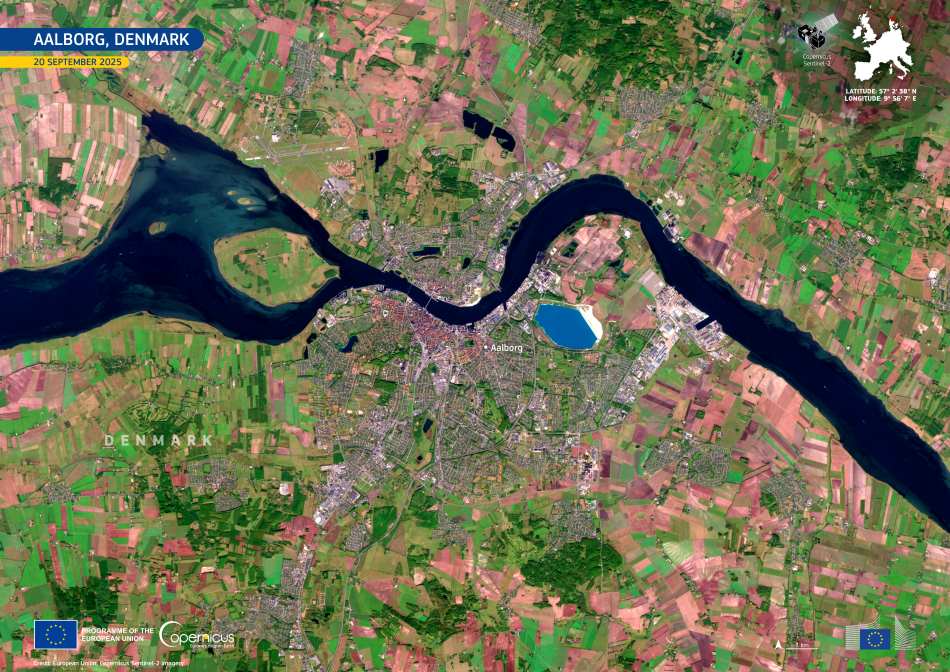Aalborg, Denmark’s fourth-largest city, combines urban development with a long-standing focus on sustainability. Located along the Limfjord in northern Jutland, the city has evolved from an industrial port into a centre for green innovation and research. Its waterfront transformation, with renewed public spaces and ecological restoration, reflects Aalborg’s broader environmental vision that has shaped local and European sustainability efforts for decades.
Aalborg’s role as a sustainability pioneer extends beyond northern Denmark. The city has been central to Europe’s green transition, from the adoption of the Aalborg Charter and Aalborg Commitments to hosting the 10th European Conference on Sustainable Cities and Towns in 2024, which urged stronger local action under the European Green Deal.

This Copernicus Sentinel-2 image, acquired on 20 September 2025, shows Aalborg’s urban landscape in close connection with its surrounding natural features. Vegetation appears in bright green, while the deep blue of the Limfjord and the artificial lake to the east highlight important ecological and recreational areas. The image also captures Aalborg’s integration of natural and urban environments, supported by careful planning and environmental monitoring.
Beyond its sustainability leadership, Aalborg has become a hub for innovation in the space sector. The city is home to more than 15 space- and satellite-related companies, positioning northern Denmark as one of the world’s leading regions for space technology and commercialisation. Aalborg University plays a key role in fostering collaboration between research and industry to advance European space capabilities.
Aalborg will host the Space Conference 2025 on 20–21 October 2025, organised by Aalborg University and the Danish Ministry of Higher Education and Science as part of the Danish Presidency of the Council of the EU. The conference will bring together leaders from the EU space industry and the research community to discuss sustainability, autonomy, and competitiveness in the European space sector.
Featured image credit: European Union, Copernicus Sentinel-2 imagery



